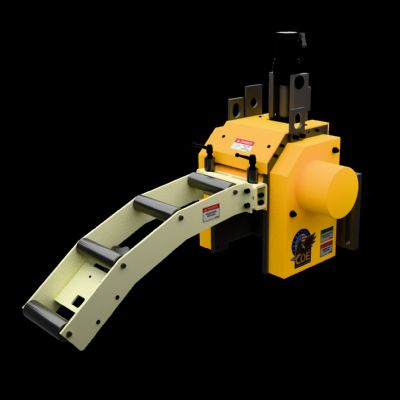Revitalizing a Used Mechanical Power Press, Part 5: Healthy Ancillaries?
June 1, 2011Comments
This fifth installment of the series addresses ancillary equipment, such as decoilers, straighteners, scrap shakers, recoilers, transfer mechanisms, pick-and-place devices and stackers/destackers. Too often these pieces of equipment are poorly maintained and experience any number of failure modes that do not become evident until actual production runs. So, acquiring what appears to be a good, used mechanical power press is not the end of the story. Rather, to determine the true measure of the system’s health, a stamper must evaluate how the press will interact with its ancillary equipment.
I remember when the first servo feeds arrived in our industry. I thought we could say goodbye to the poorly maintained, abused and unreliable mechanical feeds prevalent throughout the industry. Not so, however, as many shops still operate aging mechanical feeds. If your newly acquired used press arrives with such a feeder, I suggest some serious soul searching in an attempt to justify acquiring a new servo feed.
However, even if a used press arrives with a servo feeder, the stamper must still conduct due diligence to learn if the servo mechanism performs as it should. Be on the alert for servo feeders that have been seriously abused—I’ve visited shops where the strip slams into a French stop mechanism with every press stroke. The servo feed operating under these circumstances can easily be put under tension. For example, consider the setter who has misadjusted the servo feed, placing it in an overfeed setting. As the strip slams into its final resting place, any possibility of short feeds is eliminated.
Ah, the rub: Although the strip is indeed up against the stop and not short-fed, the servo mechanism is still pushing the strip against the block and maintaining the strip under unnecessary tension. This does a number on the servomotor, gears, rolls, etc. Even the slightest error in pilot-release timing can send the strip into a tizzy.
So, be sure to evaluate the condition of a used servo feed. Verify its consistency and accuracy by temporarily placing an analog inductive proximity sensor at the end of a die and measuring the position of the strip (via an edge, notch, hole, etc.) with every press stroke. As you run actual production of stamped parts, the exact position of the strip will be measured and displayed. Evaluate the feed at various press speeds and with different material thicknesses.
Consider using the process described above as a template for all ancillary equipment that accompanies a newly acquired used press. Ancillary equipment too often is neglected and under-maintained. Plant managers should be able to ask the following simple questions and receive solid data in response:
• Is the press ram level?
• Is the shut-height indicator correctly displaying ram position?
• Is the tonnage being properly distributed throughout the ram?
• Is the feeder feeding accurately, and properly set?
• Are the press and safety controls within regulation?
• Is the die-protection system adequately protecting the dies?
Without dependable answers to these and other questions, what a shop bought for pennies on the dollar may, after all is said and done, wind up costing it dollars on the dollar to rebuild. As President Reagan liked to say, “Trust—but verify.” MFView Glossary of Metalforming Terms
Technologies: Coil and Sheet Handling
Comments
Must be logged in to post a comment. Sign in or Create an Account
There are no comments posted. Coil and Sheet Handling
Coil and Sheet HandlingPress-Feed Equipment
Tuesday, June 17, 2025
 Coil and Sheet Handling
Coil and Sheet Handling5 Questions About Air Feeds; 5 About Servo Feeds
Bradley Nordlof Thursday, April 17, 2025
 Coil and Sheet Handling
Coil and Sheet HandlingPress Room Equipment Breaks Ground on New Facility
Friday, March 28, 2025






